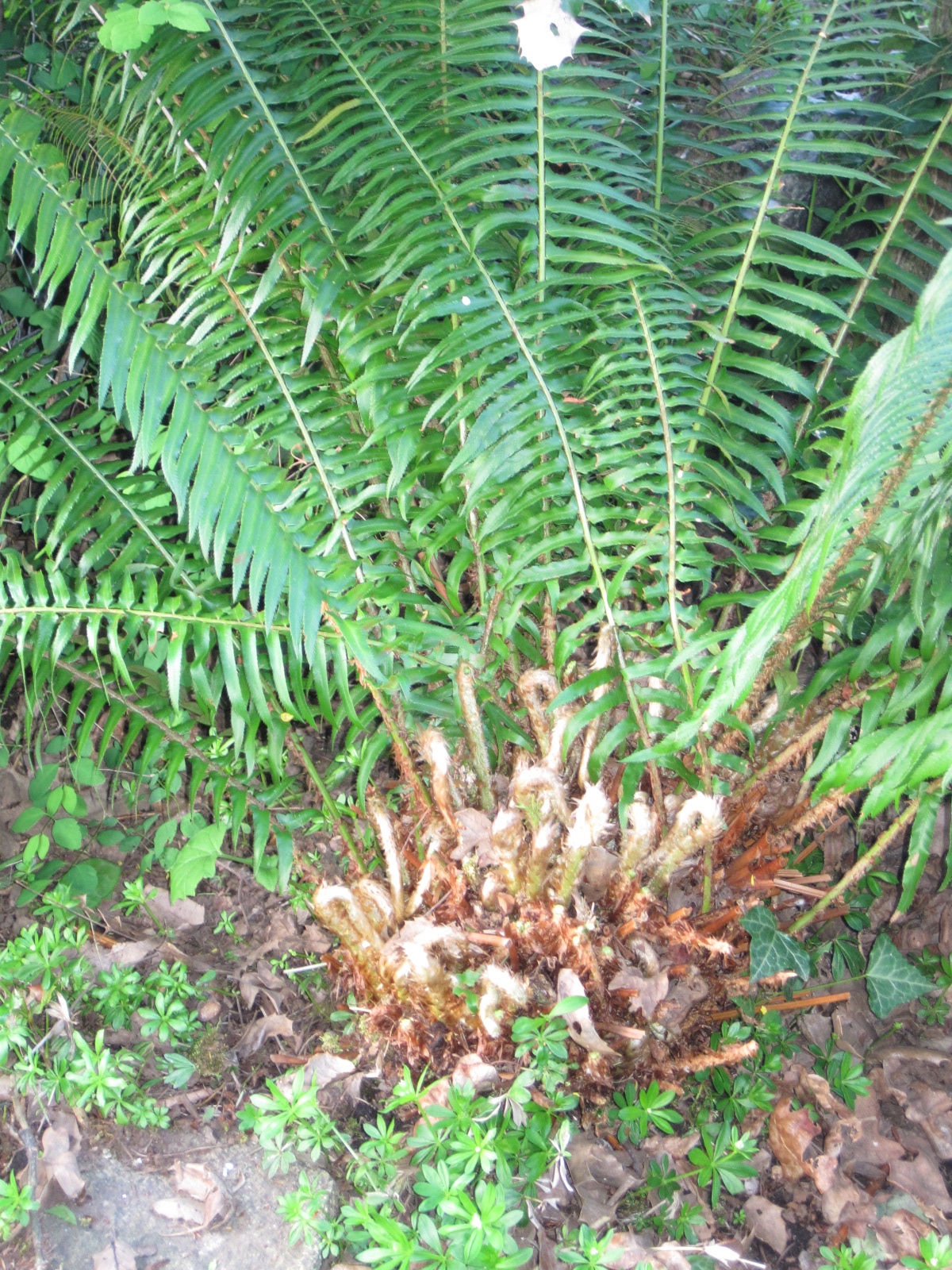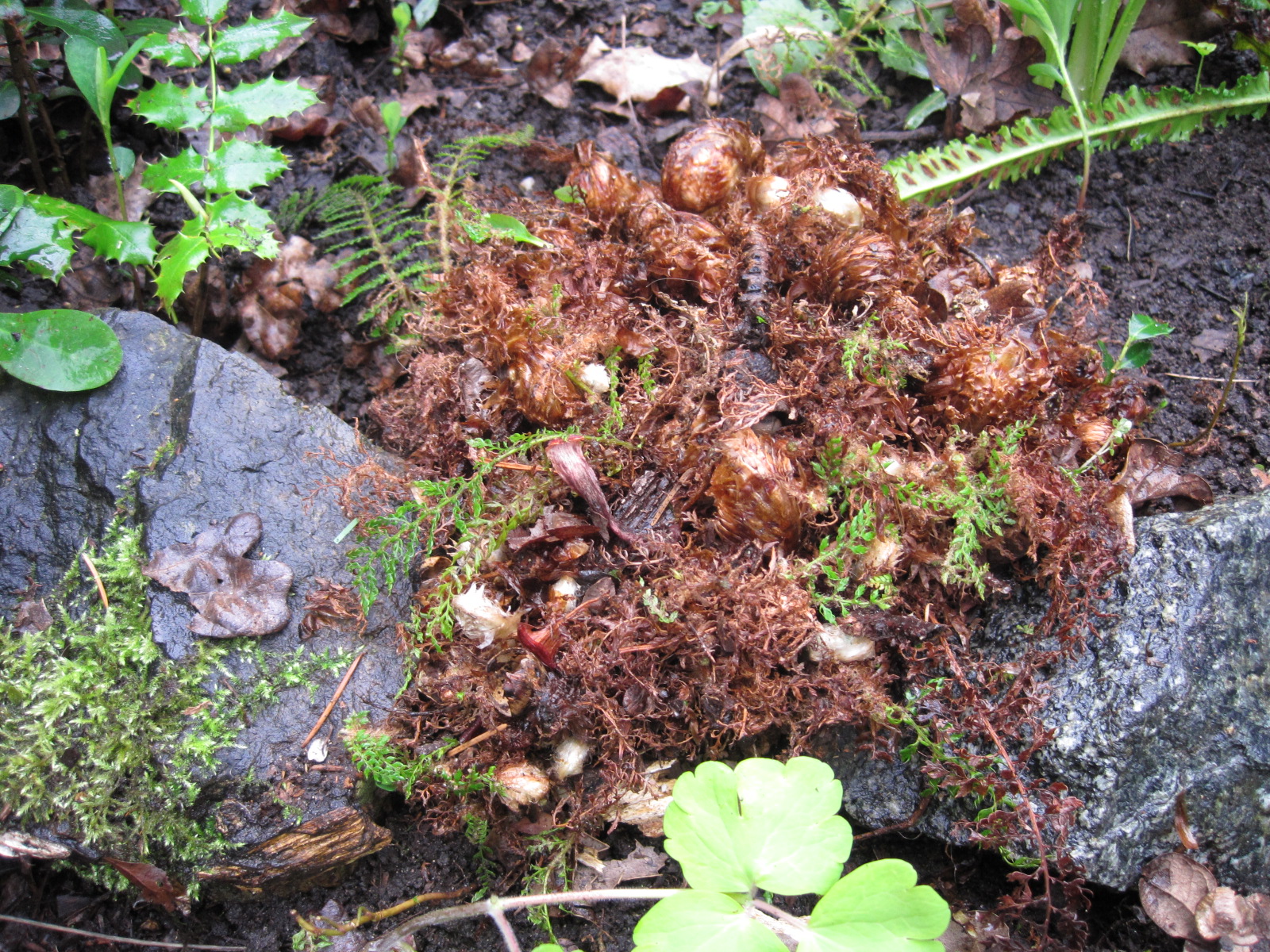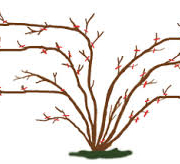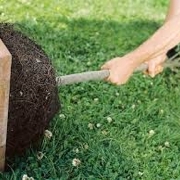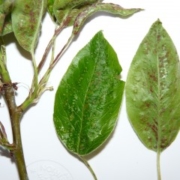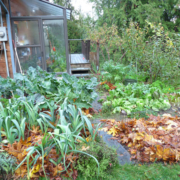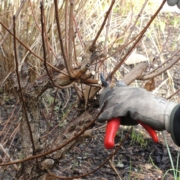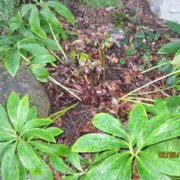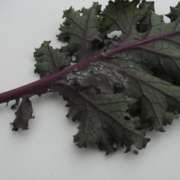Spring Haircuts for Evergreen Ferns
Every spring I look forward to the ritual of cutting back my evergreen ferns. Although it won’t harm them to leave them alone, by cutting off the old growth you make room for the fresh new fronds to show through. As soon as the soil warms enough to start the new growth, you will notice small “knuckles” forming at the base of the existing fronds, at the crown of the plant. This is the precise moment to get secateurs or hedge trimmers in hand, and cut off all the old growth. It’s hard to cut off old fronds that still look good, but you will be happy you did.
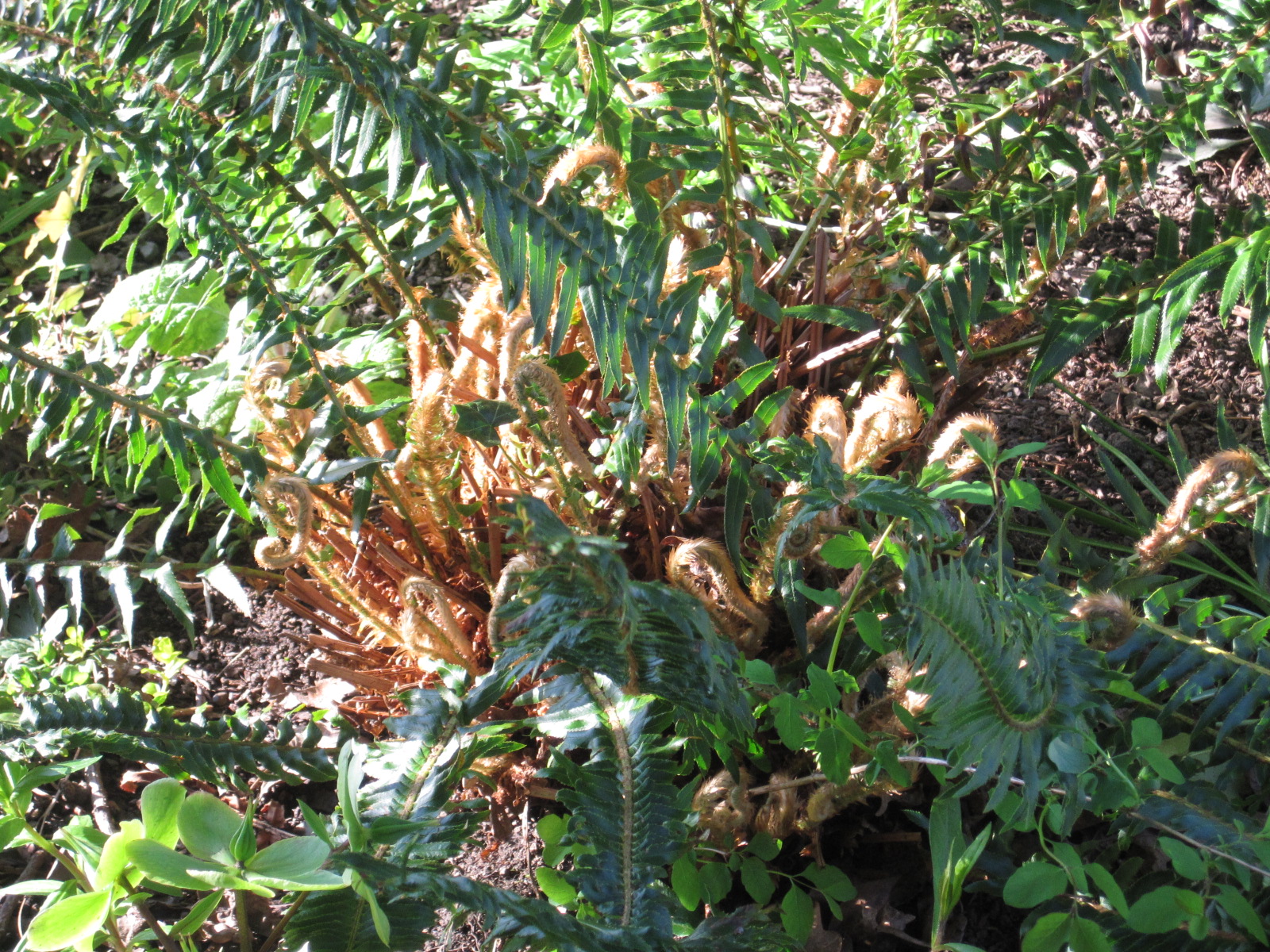
Uncut Sword fern
Polystichum munitum, or Western Sword Fern, is a classic example. In this picture, you can see it without the haircut, showing the new fronds starting to unfurl amongst the old ones.
Cutting off the old stems after the new ones emerge is fraught with danger and requires a patient hand; the risk of severing the new fronds is high. It’s a lot easier to do before the new growth comes in!
I photographed this one partially trimmed to show you the density of the new growth, with the lush old growth still standing.
In a large fern such as this one, the choice is a dense thicket of crowded fronds, or a fresh abundance of spring green.
I love the way the “knuckles” become furry “fingers” as they reach for the light.
While the Sword Fern is a natural for this treatment, don’t be afraid to do it to other ferns in your garden, they can all benefit by a close haircut each spring. My Alaska Fern (Polystichum setiferum) hadn’t been trimmed for a few years, so when I cut it back this year there was a lot of nasty brown litter crowding the crown.
I had to be quite ruthless, but I think the cleansing will do the plant good, and I’ll enjoy the greener vista along my pathway.
My Asplenium scolopendrium, or Hart’s Tongue Fern, is in a pot under the big oak tree, near many hostas, hellebores, and other shade plants. It too was starting to look leathery and tired.
Maintenance of perennials makes the difference between a garden that looks worn out and sad, or one that bursts with new vibrant growth. Trim back your ferns, and you too will enjoy the special beauty and majesty that this ancient plant brings to horticulture.

